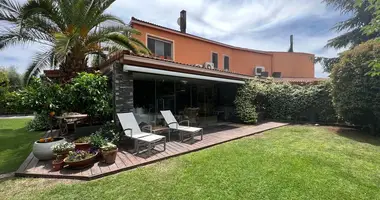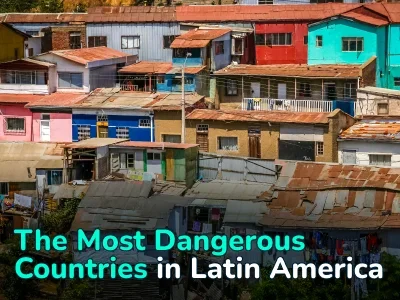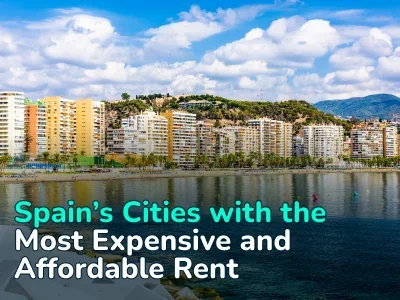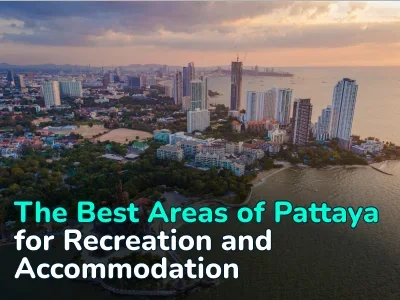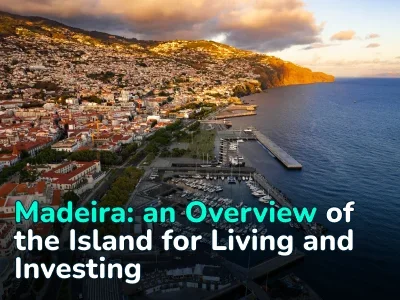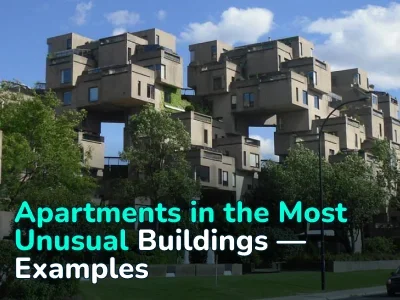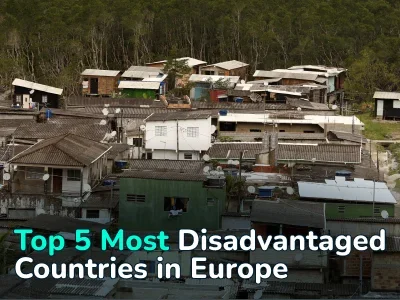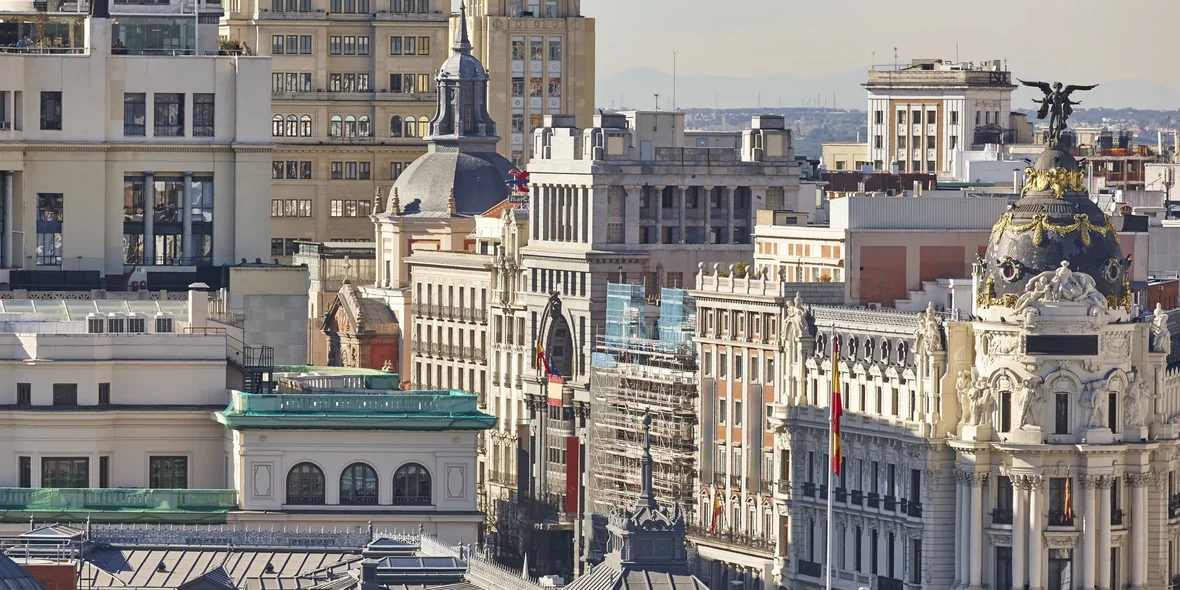
Where to Live in Madrid: Budget-Friendly, Safe (and Not So Safe) Neighborhoods
Spain may lag behind Germany and France in terms of industrial production, but its capital, Madrid, is significantly more attractive to tourists. This popularity has earned it a place among Europe’s leading tourist destinations, alongside Rome and Amsterdam.
However, this popularity draws not only tourists but also expats, young professionals, students, and families who are looking for a place that feels like home — and Madrid has plenty to offer them. From the historic city center with its museums and palaces to the modern suburbs with more affordable housing options, the city accommodates a wide range of lifestyles.
In this article, we will explore the districts of Madrid that best suit the needs of each of these groups and take a closer look at other key features of Spain’s capital.
Getting to Know Madrid
Madrid became the capital of Spain in 1561. Its historic core is centered around Plaza Mayor and the Royal Palace. The narrow streets have remained virtually unchanged since the Middle Ages, preserving their historic charm but offering limited space.
The central districts of Madrid are compact, with virtually no land available for further development. New residential areas are being built primarily in the southeast and north of the capital, about 10–15 km from the city center. These areas are where most new housing is being constructed, allowing the city to meet increasing demand — and thus offer more affordable prices — for young professionals, expats, and families.
Expansion in other directions is no longer possible, as Madrid’s borders are tightly surrounded by satellite cities such as Getafe, Leganés, Alcorcón, and Alcobendas. While city authorities have not ruled out the possibility of incorporating some of these areas into new metropolitan districts, Madrid currently consists of 21 administrative districts (distritos), each of which includes several neighborhoods (barrios).
Best Districts for Families
For families looking to settle in Madrid long-term, safety is a top priority — vibrant nightlife and entertainment options take a back seat. Moreover, those with young children need access to essential infrastructure within walking distance: hospitals, daycare centers, and schools.
Given these criteria, Chamberí is one of the most optimal choices. Located in central Madrid, the district is known for its safety and good selection of schools, such as Colegio Santa María de los Rosales. Parque Santander offers an excellent setting for walks and family leisure. The downside is cost — being in the city center comes at a price: rental rates range from €15 to €25 per m², and property purchase prices from €5500 to €7500 per m².
Another good option lies to the west of the capital — Aravaca. This relatively quiet suburb is home to international schools like the American School of Madrid and offers access to Casa de Campo, Madrid’s largest park. Safety is comparable to Chamberí, but prices are slightly more affordable: rentals from €12 to €20 per m², and purchase prices from €4000 to €6000 per m². However, the commute to the city center can take 20–30 minutes.
Chamartín is also family-friendly, thanks to schools like IES Ramiro de Maeztu and green spaces such as Parque de Berlín. However, traffic congestion and high housing costs — €15 to €25 per m² for rent and €6000 to €8500 per m² to buy — may not appeal to everyone.
One of the most balanced options is Moratalaz, a district aimed at the middle class. Rental prices here range from €10 to €15 per m², with property prices between €3500 and €5000 per m². Commutes are relatively short — just 15–20 minutes to the city center via metro.
Best Districts for Students and Young Professionals
The heart of student life in Madrid is Moncloa-Aravaca, home to the campuses of Universidad Complutense de Madrid and Universidad Politécnica. In 2024 alone, these universities hosted around 100,000 students, equivalent to the population of a small city. Rental prices are relatively affordable, ranging from €10 to €18 per m², while property prices fall between €4000 and €6000 per m². Young professionals are also drawn to this district due to its proximity to the AZCA business district, where many recent graduates find employment opportunities.
Another major hub for students and young professionals is Centro, Madrid’s historic and cultural core. The district is home to campuses of Universidad Carlos III, Complutense, and several other prestigious institutions. However, its central location and high demand drive prices significantly higher: rental rates are typically between €16 and €28 per m², and purchasing property costs €5000 to €7500 per m². The area is especially attractive to professionals in tech and startups, thanks to coworking spaces like Impact Hub that foster entrepreneurship. True to its central status, Centro offers a vibrant nightlife scene.
A more budget-friendly alternative is Usera, located in southern Madrid. Although it lacks major university campuses, its popularity among students has been growing in recent years due to its affordability. Rent ranges from €9 to €14 per m², and property prices range from €3000 to €4500 per m². The district features bars and youth-oriented infrastructure, but its main advantages are low prices and quick access to the city center via public transport.
Best Districts for Expats
Salamanca is an upscale district located in central Madrid and is home to the city’s highest concentration of expats, particularly affluent ones. This is due to the presence of luxury boutiques like Gucci and Prada, as well as several foreign embassies, including that of the United States. As of 2024, approximately 15% of all expats in Madrid resided in Salamanca. English is widely spoken here, and the district hosts multiple international schools, such as International College Spain. Security measures are among the strictest in the city. Naturally, this comes at a cost: rental prices range from €18 to €30 per m², and property prices fall between €6500 and €9000 per m².
Just east of the city center lies Retiro, a district better suited to expat families. It offers walkable access to key infrastructure: international schools, metro stations, museums, and business centers. Housing here is expensive as well, with rental rates of €16 to €25 per m² and purchase prices from €5500 to €7500 per m².
Comparable in both pricing and appeal is Chamberí, which also ranks high among expats due to its prevalence of English speakers and availability of international education options. It combines a central location with a balanced lifestyle, making it another strong choice for foreign residents.
Comparative Table of Madrid Districts
In total, we have highlighted 10 districts out of Madrid’s 21. The reason is simple: we selected only those areas that are most suitable for students, families, and expats. The remaining 11 districts are generally less appealing to these groups, whether due to higher crime rates, limited use of English, distance from educational institutions, or the lack of major employment centers.
|
District |
Best suited for |
Purchase / Rental prices (€ per m²) |
|
Salamanca |
Expats, Families |
6500–10,000 / 18–30 |
|
Chamartín |
Expats, Families |
6000–8500 / 15–25 |
|
Retiro |
Expats, Families |
5500–7500 / 16–25 |
|
Chamberí |
Expats, Families |
5500–7500 / 15–25 |
|
Moncloa-Aravaca |
Students, Young Professionals |
4000–6000 / 10–18 |
|
Centro |
Professionals |
5000–7500 / 16–28 |
|
Usera |
Students |
3000–4500 / 9–14 |
|
Ciudad Lineal |
Students |
3000–4500 / 9–15 |
|
Tetuán |
Students |
3500–5000 / 10–16 |
|
Aravaca |
Families, Expats |
4000–6000 / 12–20 |
Which Is the Safest District in Madrid?
The safest areas in Madrid are generally located in the central districts, which host numerous foreign embassies and a significant proportion of the city’s expat population. Salamanca is widely regarded as the most secure district, with a crime rate of 25 incidents per 1000 residents. Theft is rare, although occasional pickpocketing may occur in upscale boutiques and cafés along Calle Ortega y Gasset.
Close behind are Retiro and Chamberí, both reporting an average of 30 crimes per 1000 residents annually. Most of these are minor incidents — primarily pickpocketing during peak tourist seasons, especially in cafés. Serious criminal activity is almost nonexistent in these districts.
The Most Dangerous Districts in Madrid
Puente de Vallecas holds the highest crime rate in Madrid, with 70 incidents per 1000 residents. Petty theft is not the only issue in this area — drug-related activity is occasionally reported, particularly near Plaza de Entrevías. Locals tend to avoid walking around after 10 PM, especially in poorly lit neighborhoods, preferring to use the metro instead.
Another high-crime district is Carabanchel, with 60 incidents per 1000 residents. The area’s reputation suffers due to frequent pickpocketing and muggings, especially along Calle General Ricardos.
Even in central Madrid, caution is advised in specific spots. Sol, located in the heart of the Centro district, is one such example. It attracts around 8 million tourists annually, making it a hotspot for pickpockets. In the first half of 2025, over 1200 cases of pickpocketing were recorded here — 600 of them on Plaza Mayor and Gran Vía alone.
Although serious incidents are rare and the area is generally safe thanks to a strong police presence, tourists in the evening are often targeted by scammers offering fake tours or lottery tickets.
To safeguard your belongings in Madrid, follow these key safety tips:
- Even in central areas and near landmarks, always keep bags and wallets in sight: over 60% of thefts in Madrid occur in tourist zones.
- Avoid walking alone at night in Puente de Vallecas and Carabanchel.
- Use licensed taxis (e.g., Uber, Cabify) or the metro instead of walking after dark.
- Expats should check reviews of rental properties on trusted platforms to avoid scams or unsafe locations.
- Store valuables in anti-theft bags, and avoid displaying expensive items publicly.
- In rental apartments or hotels, store valuables in safes whenever possible.
Where Do Wealthy People Live in Madrid?
Madrid is home to several prestigious neighborhoods favored by the city’s wealthiest residents. Chief among them is Recoletos, an exclusive quarter within the Salamanca district. It attracts business executives and members of private clubs such as Club Financiero Génova. Nearby, you’ll find Ramón Freixa, a Michelin-starred restaurant where dinner per person costs between €100 and €150. Property prices are among the highest in the city: €8000—10,000 per m² for purchase and €20—30 per m² for rent.
El Viso, located in Chamartín, is an enclave of luxury villas often owned by professionals working in the nearby AZCA financial district. Prices here are slightly lower: €7000—9000 per m² to buy and €16—25 per m² to rent. The neighborhood offers exclusive amenities such as the Real Club de la Puerta de Hierro — with annual membership fees starting at €5000 — and the Universidad de Navarra private clinic.
Another top-tier address is the gated community of La Finca in the suburb of Pozuelo. It is home to Real Madrid football players and Spanish TV celebrities. Villas with land plots here cost €6500—8000 per m². Prices are slightly lower than in central districts due to the 20–30 minute commute to the city center via Cercanías trains.
Rounding out the list is Almagro, a prestigious quarter within Chamberí, home to both local elites and foreign diplomats. Wealthy buyers here often acquire 19th-century townhouses. Within walking distance are the Sorolla Museum and Fernández-Braso gallery, which features exhibitions of contemporary art. Apartments on Calle Almagro sell for €6500—8500 per m², while homes typically start at €7,500 per m².
The Most Affordable Districts to Live in Madrid
The lowest housing prices in Madrid are found in Ciudad Lineal, located in the northeastern part of the city. Average rental rates range from €9 to €15 per m², and property purchase prices from €3000 to €4500 per m². However, commuting to the city center takes 20–25 minutes by metro, and much of the housing stock consists of 1970s-era apartment blocks, originally built for local working-class families.
Usera, previously mentioned, falls into a similar price category due to similar reasons — 1960s-era construction. The key difference is that this area was developed primarily for migrant populations, which is reflected in its demographic profile: over 27% of residents are foreign nationals, with the majority being of Chinese origin.
A comparable situation exists in Tetuán, where low prices — €10—16 per m² for rent and €3500—5000 per m² for purchase — have attracted a large foreign population as well, accounting for 22% of residents. The district is home to sizeable Filipino, Ecuadorian, Dominican, and other Latin American communities.
Examples of real estate in Madrid
Frequently Asked Questions
Which district in Madrid is best for real estate investment?
The most promising areas for property investment are Salamanca and Centro, particularly neighborhoods like Malasaña and Chueca. Their central location and high status make them attractive for both long-term appreciation and short-term rental yields.
How much does it cost to buy an apartment in central Madrid?
In central Madrid, average property prices range from €5000 to €7500 per m². A 50 m² apartment typically costs between €275,000 and €375,000. In Chueca, for example, an apartment on Calle Barquillo can reach €400,000.
What is the safest district in Madrid for families?
Salamanca is considered the safest district in Madrid, with only 25 crimes per 1000 residents. Retiro and Chamberí follow closely, each reporting 30 incidents per 1000 residents, mostly minor thefts during peak seasons.
Where is the cheapest place to rent in Madrid?
The most affordable rentals are found in Usera and Ciudad Lineal, where prices range from €9 to €15 per m². In Usera, a room in a shared apartment costs about €400–600/month, while in Ciudad Lineal it ranges from €450–650/month. These lower prices reflect the districts' distance from the city center, 20–25 minutes by metro.
Do I need to speak Spanish to live in Madrid?
Knowing Spanish significantly improves daily life in Madrid — and in Spain in general. According to surveys conducted in 2024, only 15% of residents in Centro and Salamanca spoke fluent English, while in budget-friendly areas, the percentage dropped below 5%. Speaking Spanish is especially important for navigating administrative services, healthcare, and the rental market.
Author
I write informative articles about real estate, investments, job opportunities, taxes, etc.









